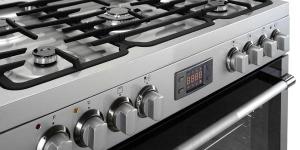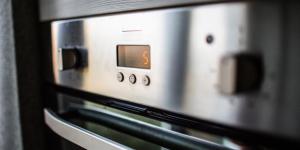When to Use an Oven Fan

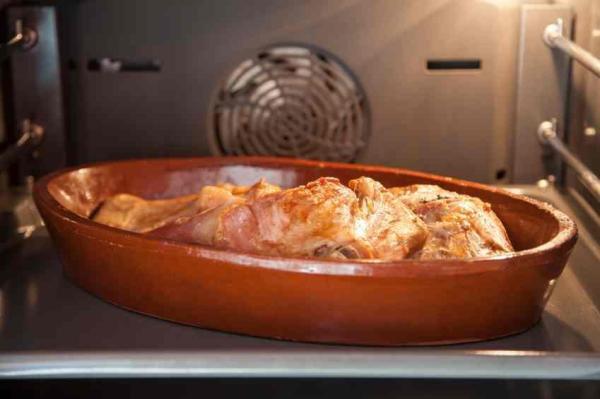
Have you ever wondered when to use the oven fan? It’s very useful for roasting or baking, helping your dishes turn out perfectly. On most ovens, the fan symbol looks like a black circle with three small fan blades inside it. The oven fan makes your cooking more versatile. You can use it for many tasks, from baking delicate pastries to roasting meats. This flexibility allows you to try out different recipes and techniques, making cooking more fun and exciting.
At OneHowTo, we explain everything you need to know about using the oven fan and how it can make your dishes even better.
What is an oven fan?
This device in the oven helps spread heat evenly throughout the inside, ensuring your food cooks equally well on all sides. This prevents any part of your meal from staying cold or undercooked. Basically, the fan circulates the set temperature inside the oven.
The fan also comes in handy when you need to defrost food, keeping a low temperature to do so gently.
You can also use the fan grill function at high temperatures to cook food without direct heat from the top or bottom, which is great for achieving a nice, even finish.
The fan's ability to circulate air can also enhance the flavor and texture of your food. For roasted meats and vegetables, the even cooking helps achieve a perfect balance of crispy exteriors and tender interiors.
Additionally, using the fan can speed up cooking times and improve energy efficiency, as the heat is distributed more effectively, reducing the need for higher temperatures and longer cooking periods.
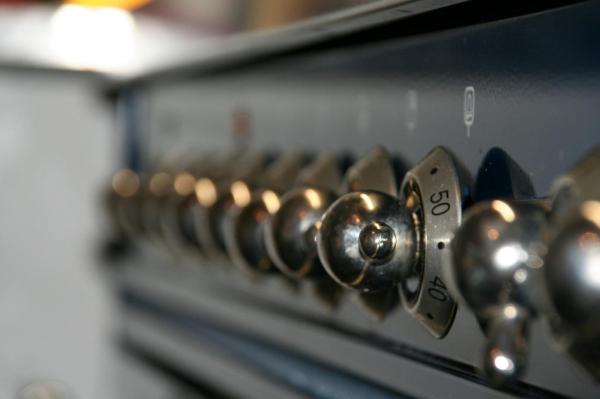
What is a fan oven best for?
Cakes and pastries
For baking cakes and pastries, the fan makes sure everything bakes evenly, so one side doesn’t cook more than the other. This is important for getting a uniform texture and even browning. For delicate pastries like macarons or éclairs, the steady temperature and airflow help them rise perfectly and stay smooth. Also, when baking multiple trays of cookies or cupcakes, the fan ensures that all trays bake evenly, no matter where they are in the oven.
Breads
When it comes to baking breads and cookies, the fan is just as helpful. It helps form a beautiful, crusty exterior on bread while keeping the inside soft and moist. For cookies, the fan prevents the bottom tray from burning before the top tray is fully cooked, allowing you to bake more at once.
Meats
The oven fan is great for large cuts of meat like chicken, turkey, or roast beef. The fan makes sure the heat spreads evenly, resulting in a juicy interior and a crispy, caramelized exterior. Plus, the fan helps cook meats faster, reducing overall cooking time without losing flavor or texture.
The fan grill function is also very useful. It’s perfect for high-temperature cooking without direct heat, providing balanced heat distribution that prevents scorching. This function is great for dishes that need a crispy exterior and tender interior, like steaks or grilled fish.
Vegetables
When roasting vegetables, the fan ensures even roasting, avoiding the common problem of some pieces being overcooked while others are undercooked. The steady airflow helps achieve uniform caramelization, bringing out the natural sweetness of the vegetables.
Pizza and flatbreads
When making pizza and flatbreads, the fan helps achieve a crispy crust without burning the toppings, making it perfect for homemade pizzas and flatbreads.
The cheese and other toppings melt evenly, ensuring a well-balanced flavor.
Casseroles and one-pot meals
Casseroles and one-pot meals also benefit from the even heat, making sure all layers are cooked through and flavors meld together perfectly. The fan helps achieve a crispy, golden topping without overcooking the ingredients underneath.

Recommendations when using an oven fan
Below are some useful recommendations and tips when using your oven fan:
- The fan allows you to cook on multiple racks simultaneously without worrying about uneven cooking. This is ideal for baking batches of cookies or roasting vegetables and meats at the same time.
- Using the fan can help preheat the oven faster. Turn the fan on while preheating to reach the desired temperature more quickly.
- When using the fan, you can typically lower the oven temperature by about 25°F (15°C). This compensates for the more efficient heat distribution and helps prevent overcooking.
- To prevent moisture loss in dishes like casseroles or baked pasta, consider covering them with foil for part of the cooking time when using the fan.
- Use the fan towards the end of the cooking time to achieve a nice brown and crispy finish on dishes like gratins, lasagna, or roasted vegetables.
- For bread baking, use the fan in combination with a steam injection if your oven has this feature. This creates a crisp crust while keeping the inside soft.
- Check your food regularly when using the fan, as cooking times can be shorter. This helps avoid overcooking and burning.
- Do not overcrowd the oven, as even with a fan, air circulation can be hindered, leading to uneven cooking.
- Keep the fan and oven clean to ensure efficient airflow and prevent the buildup of grease and food particles, which can affect performance and safety.
- Use the fan at a low temperature to defrost food evenly and quickly. This is particularly useful for items like frozen vegetables, meat, and baked goods.
Do not miss this other article where we explain how to properly clean your oven.
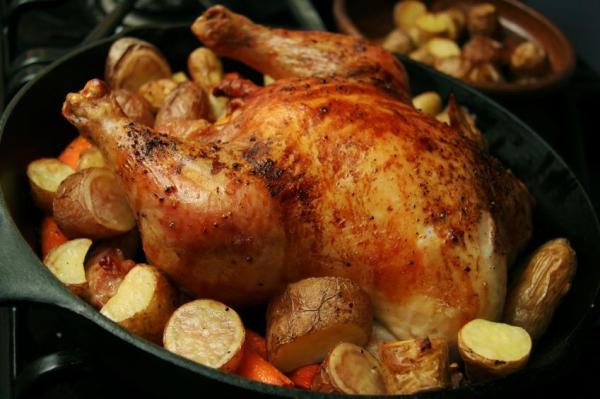
When not to use an oven fan
Below are some situations when it’s best not to use an oven fan:
- Soufflés and meringues: these delicate items can be sensitive to the airflow, causing them to collapse or bake unevenly.
- Custards and flans: the fan can create a crust on the surface before the inside is set, leading to uneven texture.
- Brioche or challah breads: these breads benefit from a humid environment to rise properly and stay moist.
- Thin baked goods: items like delicate cookies or thin pie crusts may burn or become overly dry with the fan’s constant airflow.
- Low and slow roasting: for recipes requiring slow roasting at low temperatures, like a traditional pot roast, the fan might cook the exterior too quickly while the inside remains undercooked.
- Certain pastries: some pastries that rely on a slow rise or specific layering, like puff pastry, can be negatively affected by the fan.
- Top browned dishes: dishes like lasagna or casseroles that need a browned top may brown too quickly with the fan on, requiring more frequent checking or turning off the fan partway through.
- Saucy dishes: dishes with a lot of liquid or sauce, like braises, may splatter more with the fan on and dry out faster than intended.
For information on how to bake clay, be sure to read this other article.
If you want to read similar articles to When to Use an Oven Fan, we recommend you visit our Maintenance and home security category.
